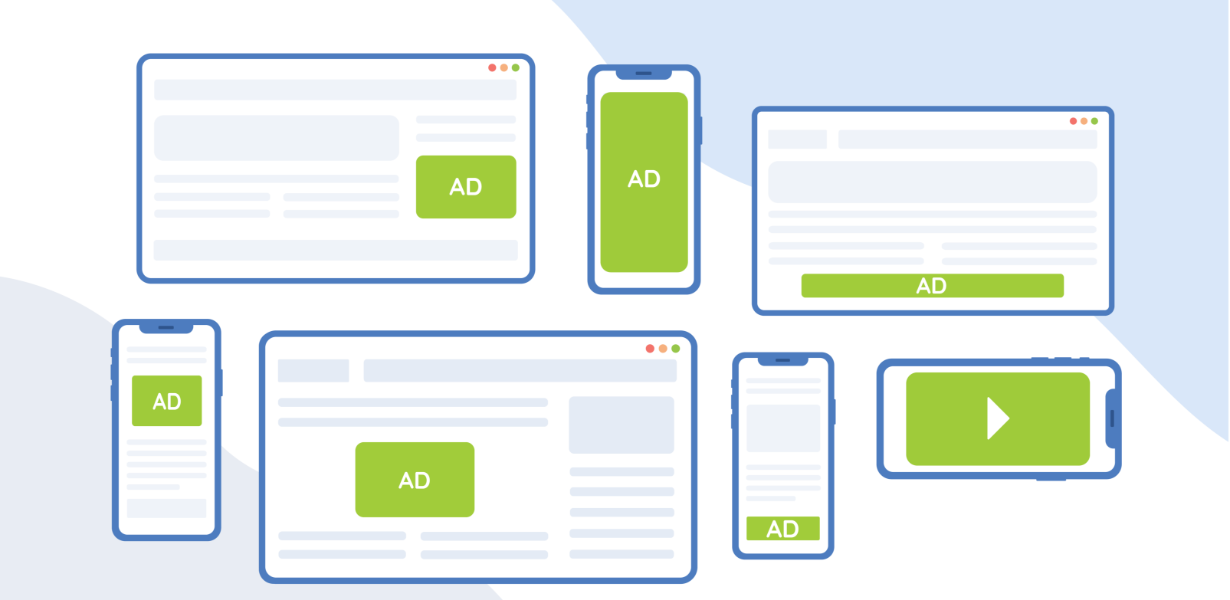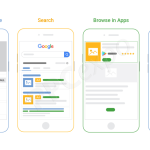
Beyond Static: Dynamic Content and Its Role in Next-Gen Digital Advertisements
- Post
- August 9, 2023
- Ad Formats, Ad Serving Tech, Programmatic Advertising
- 0 Comments
In the ever-evolving landscape of digital advertisements, staying ahead requires embracing innovation and harnessing the power of dynamic content. Traditional static ads, once the cornerstone of marketing efforts, are gradually being overshadowed by dynamic content that adapts, engages, and captivates the audience in ways previously unimagined. This shift isn’t just a trend; it’s a paradigm shift that demands attention. Let’s delve into the intricacies of dynamic content and its pivotal role in shaping the future of digital advertising.
Ad Formats: Evolution Redefined
Ad formats have come a long way since the early days of online advertising. Gone are the days when static banners were the only choice. Dynamic content, propelled by advanced technologies, allows advertisers to break free from the limitations of static imagery. Video ads, cinemagraphs, interactive elements, and personalized recommendations are the new norm, providing a breath of fresh air to the saturated ad space. These formats capture attention, elicit emotions, and drive action, thereby creating an immersive user experience.
Mobile Ad Formats: A Responsive Revolution
As the world becomes increasingly mobile-centric, advertisers must cater to the preferences of on-the-go consumers. Mobile ad formats have evolved to seamlessly integrate with users’ behaviors and devices. Dynamic mobile ads not only adapt to different screen sizes but also consider context and location. Imagine a restaurant ad that dynamically displays the nearest branch and current wait times. Such relevance elevates engagement, fostering a deeper connection with the audience.
Personalization: Forging Stronger Connections
The age of one-size-fits-all advertising is behind us. Dynamic content enables tailoring messages based on user data, behavior, and preferences. By harnessing the power of AI and machine learning, advertisers can create personalized experiences that resonate with individual viewers. From product recommendations based on browsing history to retargeting ads that remind users of items left in their carts, personalization not only drives conversions but also strengthens brand loyalty.
Real-time Updates: Timeliness Amplified
Static ads have a fixed message that can quickly become outdated. Dynamic content, on the other hand, thrives on real-time updates. Whether it’s updating an ad’s creative to reflect a current trend or modifying an offer based on changing market conditions, dynamic content ensures that your message remains relevant and resonates with the present moment.
Interactive Engagement: Participation Elevated
Interactivity is the name of the game in next-gen advertisements. Dynamic content invites viewers to actively engage with the ad, transforming passive observers into active participants. Quizzes, polls, shoppable content, and 360-degree views are just a few examples of how interactivity adds an element of playfulness and involvement to the advertising experience.
Data Integration: Insights that Drive Success
One of the most powerful aspects of dynamic content is the insights it generates. Every interaction, click, and conversion yields valuable data that can be harnessed to refine future campaigns. By analyzing user behavior and preferences, advertisers can optimize their strategies and fine-tune their targeting efforts, resulting in higher ROI and more impactful campaigns.
Challenges and Considerations: Striking the Balance
While the benefits of dynamic content are evident, it’s essential to acknowledge the challenges it presents. Creating dynamic ads requires additional resources and technical expertise. Ensuring a seamless experience across various devices and platforms can be a daunting task. Furthermore, privacy concerns must be addressed, with data collection and personalization done responsibly to earn and maintain users’ trust.
Final Words
In a digital landscape characterized by constant change, dynamic content has emerged as a beacon of innovation in the world of advertising. With its ability to engage, personalize, and adapt, it holds the key to unlocking the full potential of next-gen digital advertisements. By embracing dynamic content and staying at the forefront of technological advancements, advertisers can build meaningful connections, drive conversions, and secure a prosperous future in the ever-evolving world of digital marketing.
Commonly Asked Questions
Q1: How does dynamic content enhance user engagement?
Dynamic content engages users by offering personalized experiences and interactive elements, making them active participants rather than passive observers.
Q2: What role does personalization play in dynamic ads?
Personalization tailors ads to individual user preferences, behaviors, and demographics, fostering stronger connections and driving conversions.
Q3: How can advertisers overcome challenges in implementing dynamic content?
Advertisers can overcome challenges by investing in technical expertise, ensuring seamless cross-device experiences, and prioritizing responsible data usage.
Q4: Can dynamic content be effective for small businesses?
Yes, dynamic content can be effective for small businesses as it allows targeted and cost-efficient advertising, making it easier to reach and engage with the right audience.
Q5: How does dynamic content impact ROI?
Dynamic content’s ability to provide real-time insights and optimize campaigns based on user behavior leads to improved ROI by delivering more relevant and effective advertisements.




